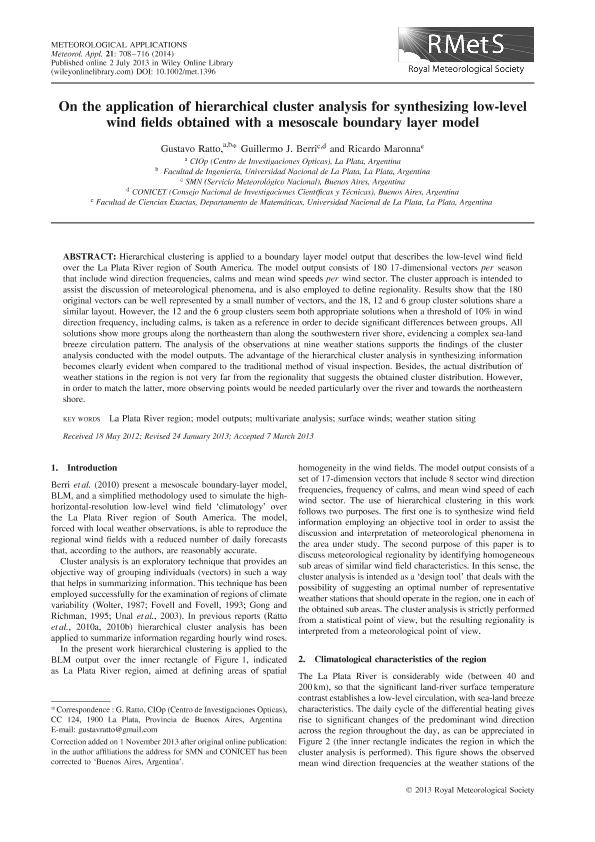Artículo
On the application of hierarchical cluster analysis for synthesizing low-level wind fields obtained with a mesoscale boundary layer model
Fecha de publicación:
07/2013
Editorial:
Wiley
Revista:
Meteorological Applications
ISSN:
1350-4827
Idioma:
Inglés
Tipo de recurso:
Artículo publicado
Clasificación temática:
Resumen
Hierarchical clustering is applied to a boundary layer model output that describes the low-level wind field over the La Plata River region of South America. The model output consists of 180 17-dimensional vectors per season that include wind direction frequencies, calms and mean wind speeds per wind sector. The cluster approach is intended to assist the discussion of meteorological phenomena, and is also employed to define regionality. Results show that the 180 original vectors can be well represented by a small number of vectors, and the 18, 12 and 6 group cluster solutions share a similar layout. However, the 12 and the 6 group clusters seem both appropriate solutions when a threshold of 10% in wind direction frequency, including calms, is taken as a reference in order to decide significant differences between groups. All solutions show more groups along the northeastern than along the southwestern river shore, evidencing a complex sea-land breeze circulation pattern. The analysis of the observations at nine weather stations supports the findings of the cluster analysis conducted with the model outputs. The advantage of the hierarchical cluster analysis in synthesizing information becomes clearly evident when compared to the traditional method of visual inspection. Besides, the actual distribution of weather stations in the region is not very far from the regionality that suggests the obtained cluster distribution. However, in order to match the latter, more observing points would be needed particularly over the river and towards the northeastern shore.
Palabras clave:
La Plata River Region
,
Model Outputs
,
Multivariate Analysis
,
Surface Winds
Archivos asociados
Licencia
Identificadores
Colecciones
Articulos(SEDE CENTRAL)
Articulos de SEDE CENTRAL
Articulos de SEDE CENTRAL
Citación
Ratto, Gustavo; Berri, Guillermo Jorge; Maronna, Ricardo Antonio; On the application of hierarchical cluster analysis for synthesizing low-level wind fields obtained with a mesoscale boundary layer model; Wiley; Meteorological Applications; 21; 3; 7-2013; 708-716
Compartir
Altmétricas




